Mahalo to Justin Quintal for permission to publish this page. Visit his webpage here: https://blackrosemfg.com/
Words: Justin Quintal
Efforts to chronicle the story of surfing, though mostly well intention, have not been immune to the pitfalls of history writing. Surf history, like all history, is subjective – full of opinions that only serve to glorify certain individuals, while the majority of characters are slowly forgotten. Truth be told the practice of modern surfing was not pioneered by only a small group of people. Seemingly any beach a surfer visits (where surfing has been established) has special people that have played an important part in the development of the surf scene in that particular area. Many of these local legends – pioneers in their own regard – brought their local flavor abroad, and foreign concepts back home with them. Every word exchanged, outline drawn, surfboard built, wave shared, friendship forged, flight taken, feud or fight, new wave discovered, every breath, and drop of water has played a part to some extent in the development of our beloved practice. To paint the entire picture – to tell the whole truth of how surfing came to be what it is today – it is important that we keep digging in order to recognize the stories of those who might have otherwise been forgotten. Our local legends feature aims to capture special moments in time and unique individuals that were important to the development of our culture. It’s our belief that, as surfers, we are all part of the same tribe. Therefore, we must pay homage to our elders.
As the birthplace of Black Rose Manufacturing we feel obliged to start this feature by sharing the history of Northeast Florida. We begin with one of the most stylish surfers to come out of the region, Larry Miniard.
Born in the mountainous countryside of Hazard, Kentucky, Larry Miniard is a true good ol’ boy. At a relatively young age, Miniard moved to Jacksonville Beach FL with his family. He started fishing off the Jacksonville Beach pier in the mid ‘60s, where he would witness fellow local legend Bruce Clelland effortlessly sliding along the clean little waves breaking just beyond his fishing line, which eventually guided him towards the practice of surfing. Soon after observing Clelland, Miniard would purchase his first surfboard: a 9’8 Phil Edwards model by Hobie.
With relatively little water time logged, Miniard became an instant success on the competitive scene. A continual top 4a competitor in the mid 60s-early 70’s, he would go on to become the 1970 ESA Men’s Champion, one of the most prestigious amateur feats at the time. Along with that accomplishment Miniard went on to compete in 4 world contests representing the United States in: San Diego 66’, Puerto Rico ’68, Australia ’70, and San Diego in ’72 – where he made it to the semi finals by beating Gavin Rudolph and Ian Cairns.
Photo: Surfer Mag | East Coast Surfing Championships ’69
While preparing for his heat at the world contest that year, Miniard overheard some men placing bets on each round. When they called Larry’s name these men started talking amongst themselves, and said something along the lines of “don’t bet on him, he’s an east coaster.” Miniard said this made him “mad as hell.” He went on to win the heat. Afterwards, as he walked by the men who’d been placing bets, he recalled, “they were just scratching their heads, with this look on their faces, like ‘who the hell is this guy?’”
“I realized that east coast surfers can do anything they want to do. All they need is the equipment, the right frame of mind, and the wave… we have the talent.” As expressed with a mild mannered southern twang during his induction speech into the East Coast Hall of Fame.
Miniard says his greatest memory was when he was on the world surf team in Australia, where he met Gerry Lopez. Lopez invited him to come stay at his house and surf with him in Hawaii, but Larry felt he had been away from home too long, and decided it was time he head back to Florida.
Photo: John Kirby | Puerto Rico ’74
Following his competitive stint, Miniard got into shaping. He had been helping design surfboards for Bob Challenger while competing and he felt shaping his own boards was a natural step. He and Joe Roland along with Dick Rosborough (Rozo) developed their own label called RMR (Rolland Miniard Rosboarough) Surfboards. Larry would then go on to produce fluid vision, another surfboard brand. During the winter he would drive to South Florida to the Fox surfboards factory in Lake Worth to shape and help Ted James at the factory there; Greg Loehr also shaped out of this facility.
Miniard continued surfing and shaping boards until 1978. Eventually complications with his neck would lead Larry back to his first love, fishing. Currently, he is one of the top inshore fishermen in North Florida, and was one of the top pros on the redfish tour for years. Now a full time fishing guide, he still goes for a surf with his son from time to time.
Q&A
- What does surfing mean to you?
When I first started as a kid doing it, it was just total freedom man. There was nothing like it. Me and a couple buddies started on a wooden paddle board riding white waters, and as soon as I started doing that… I knew. I was fishing off the pier watching these guys ride waves, that was when surfing just started here. I’d go down and borrow one of their boards. Of course they were 10 to 12 ft long at that time. It was just awesome, kind of like a skydiver or something you know? Why do you do it, because you’re free. It’s just total freedom man, you know what I mean? - Tell us a bit about where you are from, and what attracted you to surfing when you were standing there on the pier fishing?
I am actually from Hazard Kentucky, from the Backwoods, and I do mean the backwoods (chuckles). I lived in the woods right on a river in Kentucky and had been fishing since I could walk. I grew up on the river and water fishing, and just loved it. When we moved to Florida in 1961, of course I wanted to fish. I started fishing all kinds of freshwater ponds and waterways, because that’s what I did in Kentucky is freshwater fish. But then I got involved in saltwater fishing, I wasn’t into any sports or anything at that time, so I started fishing on the Jacksonville Beach pier. That was about 1964 when surfing was first starting to really get cranked up here. I would get out there and fish, and ended up wanting to do king fishing (King Mackeral) at the end of the pier, you know, catching bigger fish. Then I started watching these guys catching waves, and it would be glassy and look so cool. Bruce (Clelland) was everyone’s hero, he was so further advanced style and technique wise over everyone else it was really noticeable. So when I was a kid and would sit up there and watch people I could tell, he was the one you wanted to surf like. And that got me into running down off the pier and borrowing boards. Shoot the boards back then were really crude and heavy. But those guys would let me go down there and surf for 30 minutes or an hour, and that kind of started the whole deal. Finally I loved surfing so much, the fishing went to the side, and then I just started surfing all the time. - Tell me about your first board
My first board, hm. I was always borrowing boards, and when I really realized I wanted to surf I begged my Dad to get me a board. That was when Paul Marrino had the Village Store, and where it was located is where the Freebird Cafe is now (site of the newest SURFER BAR). But Paul owned that store, and it was a clothing store, he ended up carrying a few Hobie Surfboards too. Well let me go back a little bit. The Hobie team came here, Phil Edwards, Hobie Alter, Corky Carroll, and I think Mike Hynson. They all surfed at the Jax beach pier, and it was just unbelievable man. I mean that was like (laughs) all the gods coming and ascending and coming down and surfing here. The whole place was crowded with surfers and at that time I didn’t have a surfboard. I was watching Phil Edwards, and man he was just so smooth and good and all. They had the Phil Edwards model at the Village Store and I told my dad that’s what I wanted, and you know that’s what he ended up buying me, that Phil Edwards model. Triple Stringer, super nice board, big, around 9 and a half feet. That was a nice board for the time, and back then people didn’t really make a lot of money. I didn’t realize how much money it was, I just knew I wanted that board. It was the most expensive board in the shop. So for my dad to actually get it for me, was pretty incredible. I really didn’t realize how much it meant until years later. That was my first one, and man there were many after that (laughs). - What are some correlations you would draw between surfing and fishing?
When you’re on the water fishing, and I don’t really surf that much anymore because of neck issues and all, just being on the water. You know even though you’re on a boat, it’s kind of like being out there on a surfboard. Its just you and, and the water really. Both represent freedom, surfing I would have to say is more so a freedom thing, but when you’re out fishing, if you’re on your own, it’s just you and once again the water. Its just another thing you do on the water that kind of links us all together as water people. - What were a few of your favorite surfboards from that time period?
Well Hanson was really good at that time. G&S too, you have a lot of boards from the west coast like Yater and Hobie that were awesome. Some of the board builders sort of had this soul set of mind and then you had the people that were promoting their boards more, like Hanson and G&S. I surfed for Dewey Weber for a little while during that time, and Dewey Weber was great, and made big advances. Hanson came out with the 50-50 and the Mike Doyle models and all that stuff, those were good nose riders. And then you know with David, David Nuuhiwa, I think he was with Bing. They had different models that tended to be based around the specialty of the person that developed them. David’s was for nose riding. Then I started riding for Challenger, but that was pretty much after the main boards like Hanson, Weber, G&S, Hobie and labels like that. Honestly there were a lot of really great boards being made during that time period. - Experiencing the golden era of surfing first hand, what would you like to say to the next generation of surfers out there, especially the youth?
I think surfing went through a period of being real stylish and real smooth back in the old days with the longer boards and every thing, with the nose rides and all of that. Of course its gone through all the different stuff with Nat Young and Wayne Lynch going to shorter boards, more radical stuff, but still with style. Then I saw it get into where all this jerky stuff and radical maneuvers were happening, getting air and all that stuff, which was really cool. But at the same time I would like to see that stuff with still the style, grace, barrel riding and turns and all. In my opinion I would rather watch someone that is really smooth and graceful and combines it all together. I think that radical crazy maneuver stuff you know, I guess its everyone’s own opinion, but I think the surfer needs to always be real fluid. I do have to say I watched some of the pro contests the other day on youtube though, and some of the things those guys are doing are just phenomenal. - What is good style?
Good style would be once again fluid, smooth, radical at the same time, but complimenting the wave rather than trying to destroy it. If you want to destroy the wave that’s all fine and dandy if you’re doing maneuvers that compliment the wave itself. - This is the last question I have for you. You could have gone and stayed at Gerry Lopez’s house in Hawaii, arguably one of the most influential surfers of all time, what brought you back to the south. North Florida in particular?
You probably don’t know but I was actually married at that time. I had known Gerry, I knew all these guys through competition and all. But we kind of got to know each other real well in Australia, myself and Joe Roland were traveling and rooming together over there. I don’t know why but Lopez took a liking to us and just asked Joseph and I both, you know, why don’t you guys stop on the north shore and stay with me and surf here for a while. I wish I would have. But I had been gone already for over a month, and had my wife and daughter at the time. If I had got there living at Pipeline I would have probably never made it back (laughs). I had to get back for my family, I had been gone a long time… Ended up she left me anyways so I probably should have stayed over there with him (laughs).
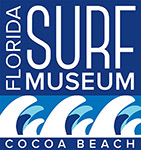



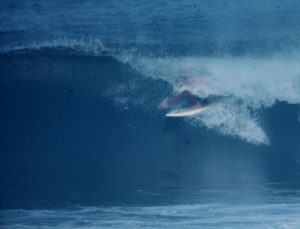
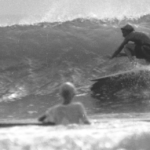
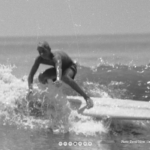
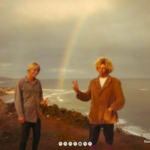
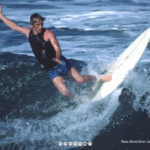
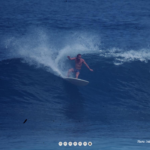

Leave A Comment